PER DIEM LOOK-UP
1 Choose a location
OR
OR
Rates for Alaska, Hawaii, and U.S. territories and possessions are set by the Department of Defense.
Rates for foreign countries are set by the Department of State.

An official website of the United States government
Here’s how you know
Official websites use .gov
A .gov website belongs to an official government organization in the United States.
Secure .gov websites use HTTPS
A lock
( )
or https:// means you’ve safely connected to the .gov website. Share sensitive information only on official, secure websites.
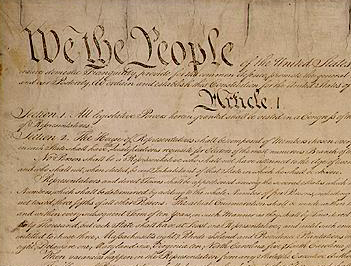
The Constitutional Convention convened at the Philadelphia State House (Independence Hall) in May 1787 to revise the Articles of Confederation. After some debate, the convention decided to instead frame an entirely new government, which would include an executive, judiciary, and legislature comprised of two houses. The Convention approved the Constitution on September 17, 1787, and it was ratified on July 2, 1788 after nine states had approved it.
American architects felt that architecture in the United States should be symbolic of the new national government, which was heavily based on the ideals of the Roman Republic. They thus rejected the British-influenced Georgian style and began looking directly to Rome for architectural inspiration.

On July 31, 1789, the Fifth Act of the First Congress created a field organization of collectors “to regulate the Collection of the Duties imposed by law on the tonnage of ships or vessels, and on goods, wares and merchandises imported into the United States.” Fifty-nine customs districts were established in eleven states, each with a collector appointed by the president.
Custom houses were usually the earliest federal buildings constructed in cities outside of the nation’s capital. In 1816, Benjamin Henry Latrobe and Maximilian Godfrey designed a custom house for Baltimore, which formed the south wing of the Exchange Building.

“Be it enacted by the Senate and House of Representatives of the United States of America in Congress assembled, That there shall be a Department of Treasury…”
During its first session, Congress formally established the Department of the Treasury to manage the new nation’s finances. Alexander Hamilton became the first Secretary of the Treasury on September 11, 1789. As part of its fiscal responsibilities, the Treasury Department administered appropriations for early public building design. A centralized program to manage federal building activities did not develop until the mid-nineteenth century.
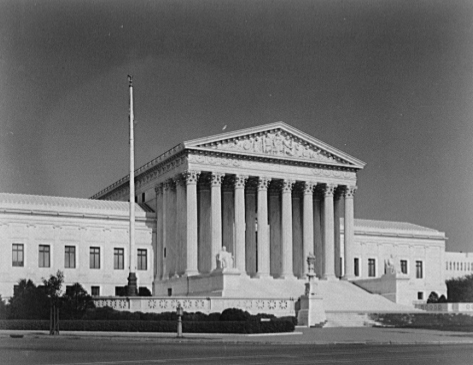
On September 24, 1789, during its first session, Congress formally established the federal judiciary, as called for in Article III of the U.S. Constitution. The Judiciary Act of 1789 created thirteen district courts, each with one judge, in major cities, and three regional circuit courts. The Supreme Court, with one chief justice and five associate justices, sat above the inferior courts as the only court of appeals. The act also created the office of Attorney General.
On February 1, 1790, the Supreme Court convened for the first time in New York City, which was then the capital of the United States, at the Royal Exchange Building. The court did not receive its own, permanent building until 1935.
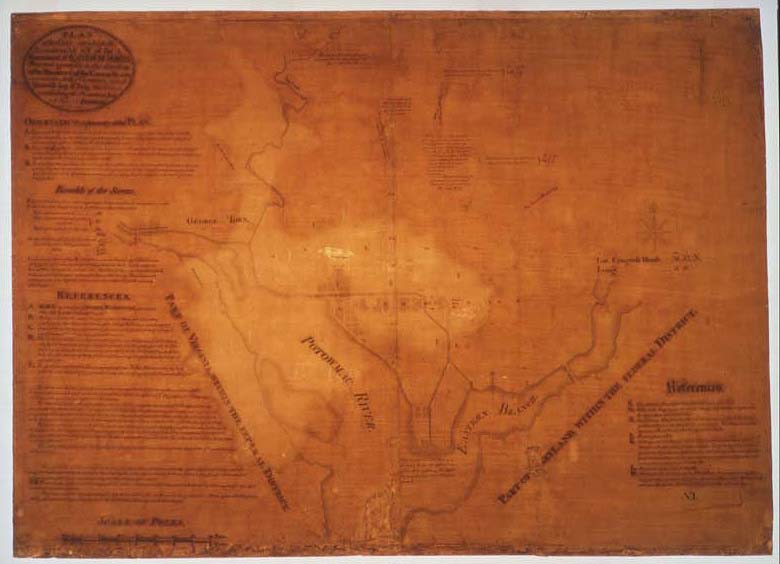
The Residence Act of 1790 designated a site on the Potomac River as the permanent capital of the United States. Philadelphia was named the temporary capital, and assumed this role until the federal government relocated to the District of Columbia in 1800. George Washington selected Pierre-Charles L’Enfant to design the new city of Washington. On August 26, 1791, L’Enfant submitted his plan, which consisted of broad, radiating avenues connecting significant focal points—the planned houses of Congress and the president—at the two highest elevations. L’Enfant’s design for Washington, D.C., remains largely in place today.
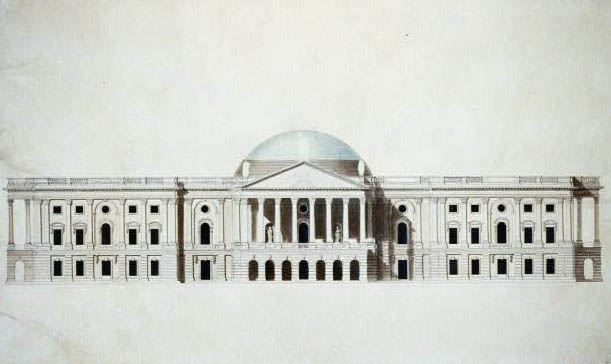
In 1792, the federal government’s first major architectural competitions took place. At the request of President George Washington, Secretary of State Thomas Jefferson announced the competition to design the President’s House. James Hoban, an Irish-born architect, won the commission for the house, which L’Enfant had allowed for in his 1791 plan for the capital city. The building was ready for occupancy in 1800, with John Adams being the first president to live there. Though mostly late-Georgian in style, the building had a Roman dome and temple front.
Dr. William Thornton, a physician, submitted his design for the Capitol after the competition deadline. He won first place, and the cornerstone was laid in 1793. James Hoban oversaw much of the construction, and the north wing was ready for occupancy by the Senate, House of Representatives, and Supreme Court by 1800.
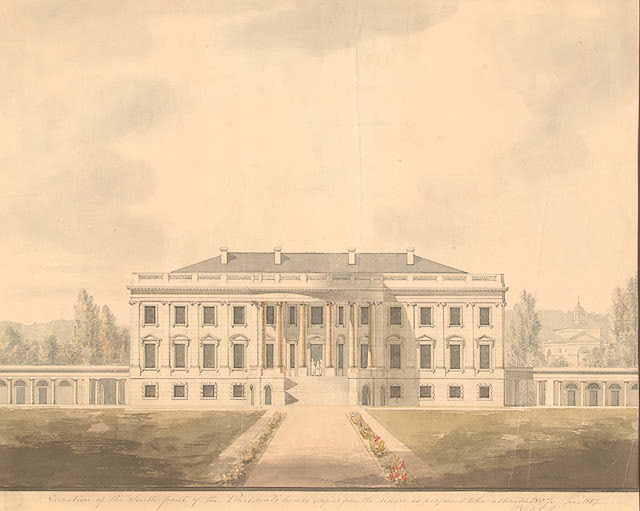
President Thomas Jefferson invited Benjamin Henry Latrobe (1764-1819), an English immigrant, to become Surveyor of Public Buildings and Grounds for the nation’s capital in 1802. In this position, Latrobe oversaw the completion of the Capitol building and the President’s House, for which he designed the north and south porticos. The position ended in 1811. Although Latrobe was rehired to work on the Capital after the British burned it during the War of 1812, he resigned due an altercation with the commissioner and left Washington.
In his Bank of Pennsylvania in Philadelphia, Latrobe was the first American architect to incorporate a Greek Order into a design. The Greek Revival style soon grew to national prominence, largely through the work of two of his students: William Strickland and Robert Mills.
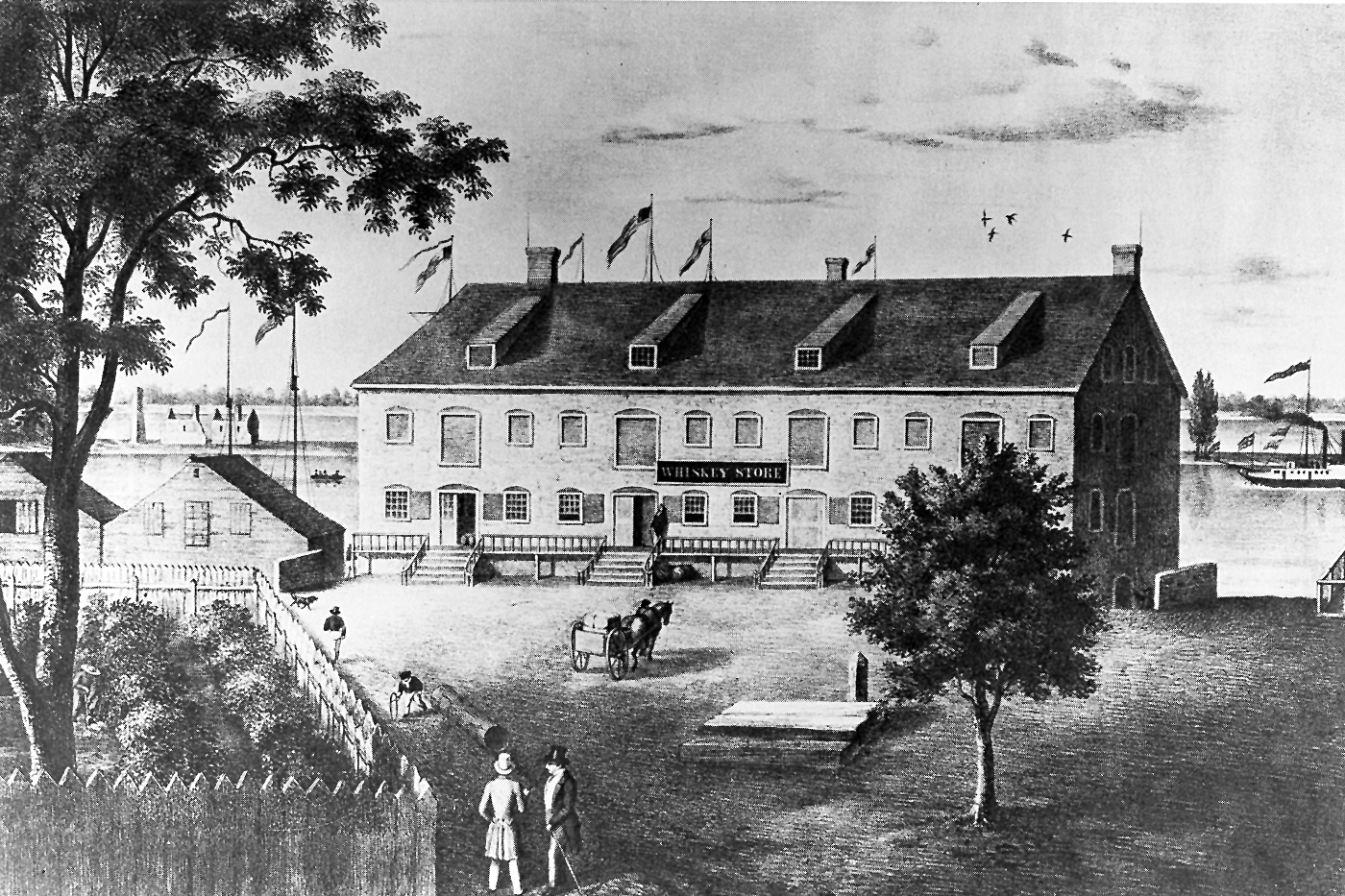
In 1810, David Parish, a German financier, constructed a a simple store and warehouse in Ogdensburg, New York. At the beginning of the nineteenth century, Ogdensburg was an important component of a regional distribution network for goods brought to upper New York State via the St. Lawrence River. The area around Ogdensburg was unsettled and remote; there were few roads and transportation of goods was extremely difficult. When the Parish Store was built, goods were brought up the St. Lawrence River, warehoused in Ogdensburg, and distributed regionally.
In 1811, Congress established the U.S. Customs District of Oswegatchie in Ogdensburg. According to local tradition, the Parish store likely housed U.S. Customs Service functions as early as 1811 until 1870 (when a new building was constructed to house government offices). In 1928, the district headquarters of the U.S. Customs Service was moved into leased space in the Parish Store; the U.S. Government subsequently purchased the building in 1936 and changed its name to the U. S. Custom House.
Visit the Robert C. McEwen U.S. Custom House, Ogdensburg, NY
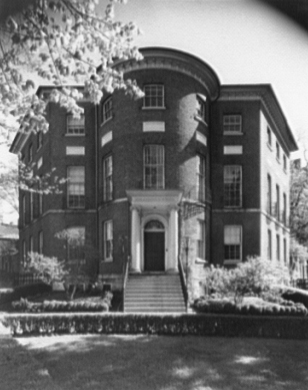
The United States responded to a series of naval conflicts with the British with a declaration of war in 1812. After defeating American troops at Bladensburg, Maryland, British troops arrived in Washington on August 24, 1814. They soon set fire to major federal buildings throughout the city, including the President’s House, the Capitol, and the Treasury Building. The city was in ruins.
After contemplating relocating to a more secure location, the government decided to remain in Washington. Congress met in the General Post Office (formerly Blodgett’s Hotel) and the Madisons took up residence at the Tayloe family’s Octagon House. The Treaty of Ghent was signed on Christmas Eve, 1814, ending the war. In 1815, Congress passed a bill that all public buildings in Washington should be rebuilt on their original sites.
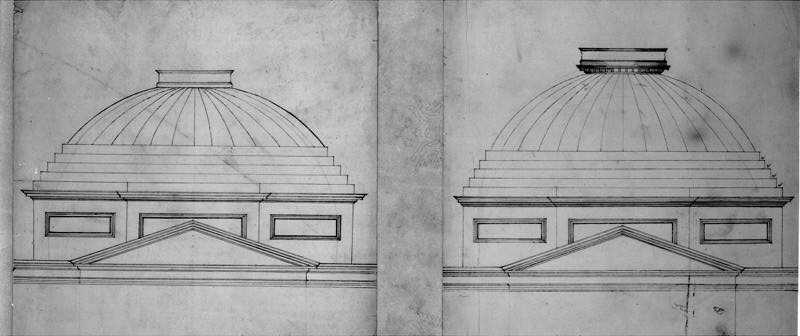
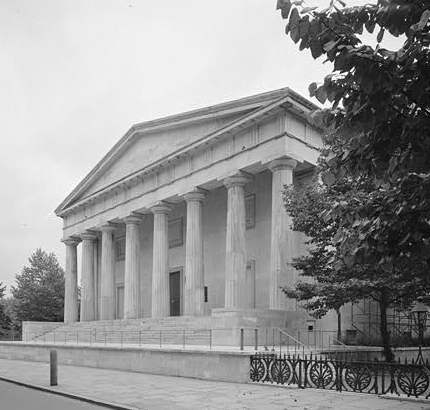
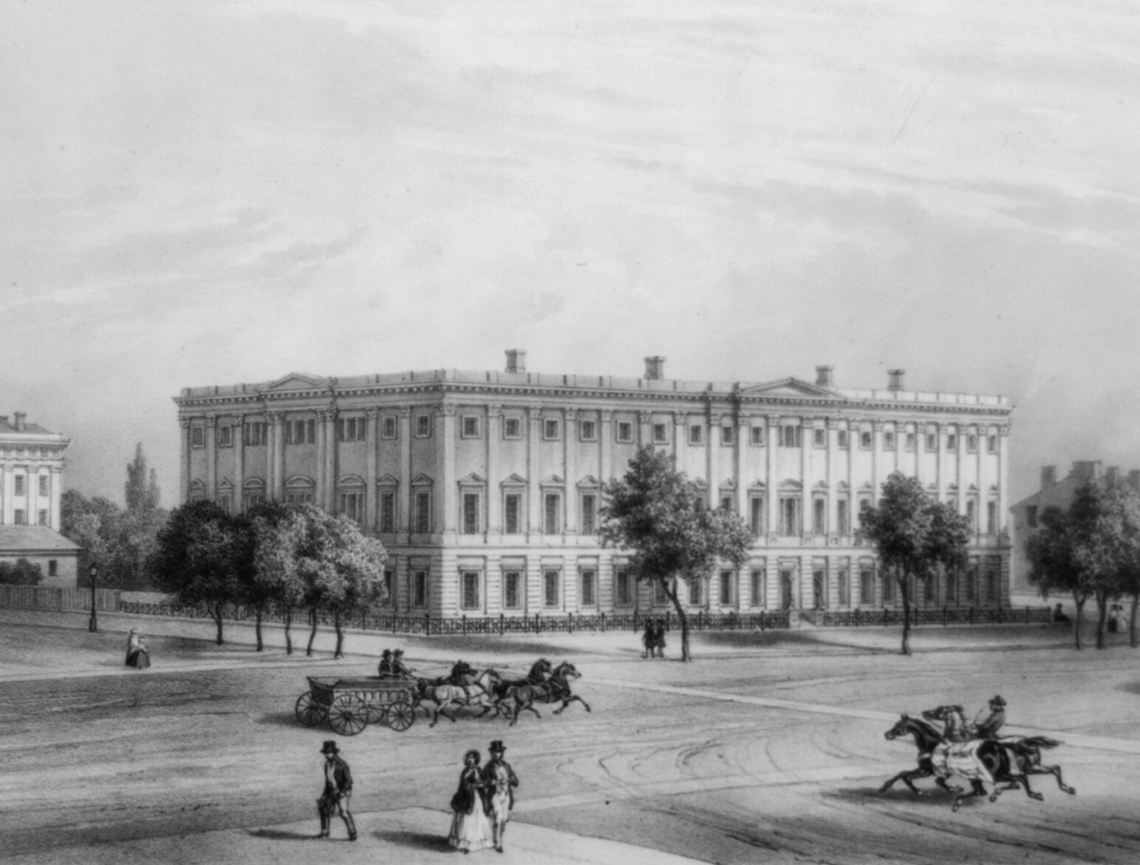
One of the first American-born and professionally trained architects, Robert Mills (1781-1855) studied under Benjamin Henry Latrobe and James Hoban. Mills arrived in Washington, DC, in 1830. After spending his first years in Washington altering existing public buildings, Mills won the competition for the design of the Washington Monument in 1836. The same year, President Andrew Jackson appointed Mills Architect of Public Buildings, through which role he designed the Treasury Building, Patent Office and General Post Office in Washington, DC.
In his work, Mills utilized Classical Revival architecture, most often employing the Greek Revival style. His role as public buildings architect ceased in 1842, but Mills remained in Washington until his death.
Visit the U.S. International Tarriff Building/Hotel Monaco, Washington, DC
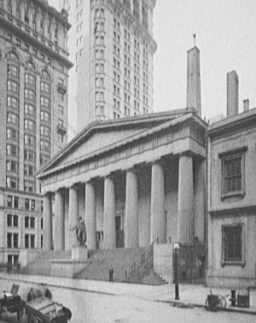
Located at 26 Wall Street, New York’s City Hall housed the federal government before it moved to Philadelphia in 1789. The building, the site of George Washington’s inauguration and the adoption of the Bill of Rights, was demolished in 1814. In 1833, the government held a competition for the design of a custom house on the site. First prize went to Ithiel Town and Alexander Jackson Davis, who submitted a design in proportion with the Parthenon. The original plans were significantly altered during the construction phase, however, with architects William Ross and John Frazee redesigning the interior.
The building was completed and occupied in 1842. The Customs Service relocated in 1860, and the building became the U.S. Sub-Treasury. Today known as Federal Hall, the building houses a National Park Service museum dedicated to George Washington and the founding of the United States.
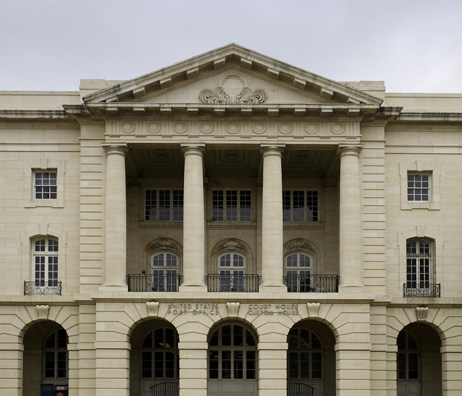
After declaring its independence from Mexico in 1836, Texas became an independent nation until 1845 when it was voluntarily annexed by the United States.
A border dispute soon arose between the United States and Mexico, which had refused to recognize Texas’s independence. Skirmishes in South Texas led to the United States declaring war on Mexico in 1846. The Mexican-American War had begun.
When the war ended two years later, the Rio Grande River was established as the border between Mexico and the United States. The city of Laredo, formerly part of Mexico, became part of the United States as the so-called “Gateway to Mexico”.
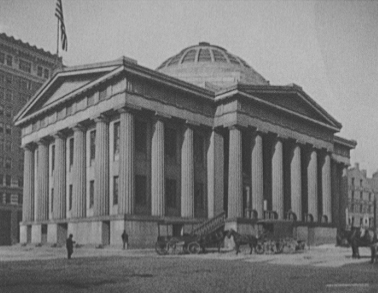
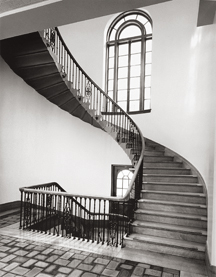
The Treaty of Guadalupe Hidalgo ended the Mexican-American War on February 2, 1848. For $15 million, the U.S. acquired 500,000 miles of land in the West and Southwest from Mexico, including New Mexico, Arizona, California, Texas, and portions of Colorado, Utah and Nevada.
A few years later, in 1853, the federal government began construction of a “state house” in Santa Fe. The building has housed federal courts since it was completed in 1889.
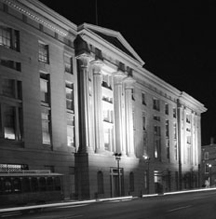
The U.S. Custom House was planned in the 1840s in response to increasing trade through the Mississippi Valley. In 1847, the Treasury Department chose the design of Alexander Thompson Wood, and construction began in 1848. After Wood was replaced as architect in 1850, a succession of eight architects followed, each modifying the original design concept.
The partially completed building was first occupied in 1856 when the U.S. Customs Service moved into the first floor. The post office followed in November 1860, and the building served as the city’s main post office through the remainder of the nineteenth century.
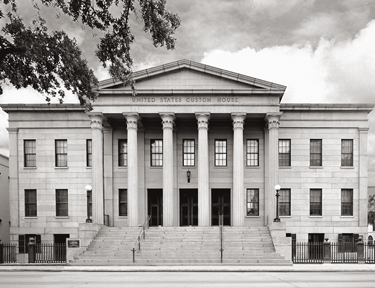
The federal government purchased a site to house a new custom house in Savannah, Georgia in 1845. Architect John Norris designed the Greek Revival style building, which also housed the U.S. Post Office and federal courts, and construction took place between 1848 and 1852.
In 1860, the case involving the Wanderer, a ship that illegally transported African slaves to the United States in 1858, was tried in the building. None of the defendants was convicted.
![U.S. Custom House [as planned], Charleston, South Carolina](https://www.gsa.gov/system/files/ephox_images/charlestoncustomhouse_1473377532803.jpg)
In the early 1850s, Secretary of the Treasury Thomas Corwin sent architect Ammi B. Young to inspect various federal building projects. Young’s work met with the secretary’s approval, and in March 1852 Corwin offered Young a permanent position with a $3000 annual salary. By late 1852, Young had assumed the title of “Supervising Architect” and was not only inspecting buildings, but also designing them. Young retained this responsibility until the Civil War brought all building projects to a standstill.

After James Guthrie became Secretary of the Treasury in 1853, he reorganized the newly centralized public buildings program. He appointed Captain Alexander Hamilton Bowman as chief of the Bureau of Construction. In this role, Bowman oversaw the Office of the Supervising Architect, though Ammi Young remained the primary designer of buildings.
After many years of disjointed supervision, the Department of the Treasury had centralized system for managing the nation’s federal building projects.
Error, The Per Diem API is not responding. Please try again later.
No results could be found for the location you've entered.
Rates for Alaska, Hawaii, and U.S. territories and possessions are set by the Department of Defense.
Rates for foreign countries are set by the Department of State.
Rates are available between 10/1/2022 and 09/30/2025.
The End Date of your trip can not occur before the Start Date.
Traveler reimbursement is based on the location of the work activities and not the accommodations, unless lodging is not available at the work activity, then the agency may authorize the rate where lodging is obtained.
Unless otherwise specified, the per diem locality is defined as "all locations within, or entirely surrounded by, the corporate limits of the key city, including independent entities located within those boundaries."
Per diem localities with county definitions shall include"all locations within, or entirely surrounded by, the corporate limits of the key city as well as the boundaries of the listed counties, including independent entities located within the boundaries of the key city and the listed counties (unless otherwise listed separately)."
When a military installation or Government - related facility(whether or not specifically named) is located partially within more than one city or county boundary, the applicable per diem rate for the entire installation or facility is the higher of the rates which apply to the cities and / or counties, even though part(s) of such activities may be located outside the defined per diem locality.
An SBA program that helps provide a level playing field for small businesses owned by socially and economically disadvantaged people or entities that meet the following eligibility requirements:
See Title 13 Part 124 of the Code of Federal Regulations for more information.
From 5 USC 5701(6), "continental United States" means the several states and the District of Columbia, but does not include Alaska or Hawaii.
A multiple-award IDIQ governmentwide acquisition contract offering complete and flexible IT solutions worldwide. A best-in-class GWAC and preferred governmentwide solution, Alliant 2 offers:
It provides best-value IT solutions to federal agencies, while strengthening chances in federal contracting for small businesses through subcontracting.
A dedicated, flexible fuel, or dual-fuel vehicle designed to operate on at least one alternative fuel.
An investment in our nation’s infrastructure and competitiveness. The law provides funding for LPOE modernization projects that will create new good-paying jobs, bolster safety and security, and make our economy more resilient to supply chain challenges.
An agreement established by a government buyer with a Multiple Award Schedule contractor to fill repetitive needs for supplies or services.
Types of funds to use on specific expenses.
The work done to make a structure or system ready for use or to bring a construction or development project to a completed state.
Negotiated firm-fixed pricing on airline seats for official government travel. The locked-in ticket prices for the fiscal year save federal agencies time and money. Federal employees enjoy flexibility to change their plans without incurring penalties or additional costs. All negotiated rates have:
Use the CPP search tool to find current fares.
A space where individuals work independently or co-work collaboratively in a shared office. The work environment is similar to a typical office, usually inclusive of office equipment and amenities. Typical features of co-working facilities include work spaces, wireless internet, communal printer/copier/fax, shared kitchens, restrooms and open seating areas. May also be referred to as a “shared office.”
A system that is bought from a commercial vendor to solve a particular problem, as opposed to one that a vendor custom builds.
An employee who negotiates and awards contracts with vendors and who has the sole authority to change, alter or modify a contract.
An employee whose duties are to develop proper requirements and ensure contractors meet the commitments during contract administration, including the timeliness and delivery of quality goods and services as required by the contract.
A request of GSA where a federal agency retains and manages all aspects of the procurement process and is able to work with the selected vendor after award.
The process of handling real property that is surplus to the federal government’s needs. Federal law mandates the disposal process, which has these major steps (although not every property goes through every step):
An SBA program that gives preferential consideration for certain government contracts to businesses that meet the following eligibility requirements:
See Title 13 Part 127 Subpart B of the Code of Federal Regulations for more information.
A vehicle that is powered by an electric motor drawing current from rechargeable storage batteries or other portable electrical energy storage devices, as defined by 10 C.F.R. § 474.2. It includes a battery electric vehicle, a plug-in hybrid electric vehicle, a fuel-cell electric vehicle, etc.
Also called electric vehicle chargers, this includes EV charge cords, charge stands, attachment plugs, vehicle connectors, and protection, which provide for the safe transfer of energy between the electric utility power and the electric vehicle.
The primary regulation for federal agencies to use when buying supplies and services with funds from Congress.
Use acquisition.gov to browse FAR parts or subparts or download the full FAR in various formats.
The travel and relocation policy for all federal civilian employees and others authorized to travel at government expense.
A program that promotes the adoption of secure cloud services across the federal government by providing a standardized approach to security and risk assessment.
A GSA business line that provides safe, reliable, low-cost vehicle solutions for federal agency customers and eligible entities. Offerings include:
A charge card for U.S. government personnel to use when paying for fuel and maintenance of GSA Fleet vehicles. Find out where the Fleet card is accepted, how to use it and more.
A Department of Homeland Security program that allows members to use expedited lanes at U.S. airports and when crossing international borders by air, land and sea.
A charge card for certain U.S. Government employees to use when buying mission-related supplies or services using simplified acquisition procedures, when applicable, and when the total cost does not exceed micro-purchase thresholds.
A charge card for U.S. government personnel to use when paying for reimbursable expenses while on official travel. Visit smartpay.gsa.gov for more.
A vehicle used to perform an agency’s mission(s), as authorized by the agency.
A pre-competed, multiple-award, indefinite delivery, indefinite quantity contract that agencies can use to buy total IT solutions more efficiently and economically.
A ceremony marking the official start of a new construction project, typically involving driving shovels into ground at the site.
An online shopping and ordering system at gsaadvantage.gov that provides access for federal government employees and in some cases, state and local entities, to purchase from thousands of contractors offering millions of supplies and services.
An online auction site at gsaauctions.gov that allows the general public to bid on and buy excess federal personal property assets such as:
Real property for which GSA is responsible. It can be either federally owned or leased from a public or private property owner.
An SBA program that gives preferential consideration for certain government contracts to business that meet the following eligibility requirements:
See Title 13 Part 126 Subpart B of the Code of Federal Regulations for more information.
A type of contract when the quantity of supplies or services, above a specified minimum, the government will require is not known. IDIQs help streamline the contract process and speed service delivery.
A fee paid by businesses who are awarded contracts under Multiple Award Schedule to cover GSA’s cost of operating the program. The fee is a fixed percentage of reported sales under MAS contracts that contractors pay within 30 calendar days following the completion of each quarter.
A law that provides $3.375 billion for us to:
This includes $2.15 billion for low embodied carbon materials in construction projects, $975 million to support emerging and sustainable technologies, and $250 million for measures to convert more buildings into High Performance Green Buildings.
A written agreement entered into between two federal agencies, or major organizational units within an agency, which specifies the goods to be furnished or tasks to be accomplished by one agency (the servicing agency) in support of the other (the requesting agency).
A facility, also known as a border station, that provides controlled entry into or departure from the United States for persons or materials. It houses the U.S. Customs and Border Protection and other federal inspection agencies responsible for the enforcement of federal laws related to entering into or departing from the U.S.
An employee who is responsible for preparing, negotiating, awarding and monitoring compliance of lease agreements.
Criteria used to select the technically acceptable proposal with the lowest evaluated price. Solicitations must specify that award will be made on the basis of the lowest evaluated price of proposals meeting or exceeding the acceptability standards for non-cost factors.
The rate of reimbursement for driving a privately owned vehicle when your agency authorizes it. Current rates are at gsa.gov/mileage.
Long-term governmentwide contracts with commercial firms providing federal, state, and local government buyers access to more than 11 million commercial products and services at volume discount pricing. Also called Schedules or Federal Supply Schedules.
The standard federal agencies use to classify business establishments for the purpose of collecting, analyzing, and publishing statistical data related to the U.S. business economy.
A family of seven separate governmentwide multiple award, IDIQ contracts for program management, management consulting, logistics, engineering, scientific and financial services.
A formal, signed agreement between GSA’s Public Buildings Service and a federal agency for a specific space assignment.
Services performed under a contract with a federal agency that include:
Official verification of someone’s origin, identity, and nationality. A U.S. passport is required of U.S. citizens for international travel and reentry into the United States. There are three types of passports: diplomatic, official, and regular. A government official may have at the same time a valid regular passport and a valid official or diplomatic passport. Use GSA Form 2083 to begin a request for an official passport.
The per day rates for the lower 48 continental United States, which federal employees are reimbursed for expenses incurred while on official travel. Per diem includes three allowances:
An identification card that allows credentialed government personal to access facilities, computers, or information systems. May also be referred to as HSPD-12 card, LincPass, Smart Card, or CAC.
Furniture and equipment such as appliances, wall hangings, technological devices, and the relocation expenses for such property.
Information that can be used to distinguish or trace an individual’s identity, either alone or when combined with other information that is linked or linkable to a specific individual. Get more info from OMB Circular A-130 [PDF].
You should only drive a privately owned vehicle for official travel after your agency evaluates the use of:
When your agency has determined a POV to be the most advantageous method of transportation, you are authorized reimbursement for mileage and some additional allowances (parking, bridge, road and tunnel fees, etc.).
Approvals from GSA’s congressional authorizing committees, the U.S. Senate Committee on Environment and Public Works and the U.S. House Committee on Transportation and Infrastructure, for proposed capital and leasing projects that require funding over an annually established threshold.
Region 1 (New England): Connecticut, Maine, Massachusetts, New Hampshire, Rhode Island, Vermont
Region 2 (Northeast and Caribbean): Northern New Jersey, New York, Puerto Rico, U.S. Virgin Islands
Region 3 (Mid-Atlantic): Delaware, parts of Maryland, Southern New Jersey, Pennsylvania, parts of Virginia, West Virginia
Region 4 (Southeast Sunbelt): Alabama, Florida, Georgia, Kentucky, Mississippi, North Carolina, South Carolina, Tennessee
Region 5 (Great Lakes): Illinois, Indiana, Michigan, Minnesota, Ohio, Wisconsin
Region 6 (Heartland): Iowa, Kansas, Missouri, Nebraska
Region 7 (Greater Southwest): Arkansas, Louisiana, New Mexico, Oklahoma, Texas
Region 8 (Rocky Mountain): Colorado, Montana, North Dakota, South Dakota, Utah, Wyoming
Region 9 (Pacific Rim): Arizona, California, Hawaii, Nevada
Region 10 (Northwest Arctic): Alaska, Idaho, Oregon, Washington
Region 11 (National Capital): Washington, D.C., area including parts of Maryland and Virginia
Formal agreements between GSA and a federal agency customer where GSA agrees to provide goods, services, or both, and the federal agency agrees to reimburse GSA’s direct and indirect costs. The customer portal for RWA information is called eRETA at extportal.pbs.gsa.gov.
A document used in negotiated procurements to communicate government requirements to prospective contractors (firms holding Multiple Award Schedule contracts) and to solicit proposals (offers) from them.
A document used to communicate government requirements, but which do not solicit binding offers. Quotations submitted in response are not offers. The Multiple Award Schedule order is the offer, and then the contractor can do something to show acceptance, like ordering supplies or contacting subcontractors.
An SBA program that gives preferential consideration for certain government contracts to businesses that meet the following eligibility requirements:
See Title 13 Part 125 Subpart B of the Code of Federal Regulations for more information.
An SBA designation for businesses that meet size standards set for each NAICS code. Most manufacturing companies with 500 employees or fewer, and most non-manufacturing businesses with average annual receipts under $7.5 million, will qualify as a small business.
See Title 13 Part 121.201 of the Code of Federal Regulations for more information.
To improve and stimulate small business utilization, we award contracts to businesses that are owned and controlled by socially and economically disadvantaged individuals. We have contracting assistance for:
A Small Business Administration program that gives preferential consideration for certain government contracts to business that meet the following eligibility requirements:
See Title 13 Section 124.1001 of the Code of Federal Regulations for more information.
The basis for the lease negotiation process, which becomes part of the lease. SFOs include the information necessary to enable prospective offerors to prepare proposals. See SFO minimum requirements.
Specific supply and service subcategories within our Multiple Award Schedule. For the Information Technology Category, a SIN might be new equipment or cloud services.
A national policy committing to create and maintain conditions under which humans and nature can exist in productive harmony to support present and future generations.
An online system at sam.gov, which the U.S. Government uses to consolidate acquisition and award systems for use by contractors wishing to do business with the federal government. Formerly known as FBO.gov, all contracting opportunities valued over $25,000 are posted at sam.gov.
When you use a government purchase card, such as the "GSA SmartPay" travel card for business travel, your lodging and rental car costs may be exempt from state sales tax. Individually billed account travel cards are not tax exempt in all states. Search for exemption status, forms and important information.
The finishes and fixtures federal agency tenants select that take a space from a shell condition to a finished, usable condition and compliant with all applicable building codes and standards.
A statute that applies to all Multiple Award Schedule contracts, unless otherwise stated in the solicitation or contract, which requires contractors to sell to the U.S. Government only products that are manufactured or “substantially transformed” in the U.S. or a TAA-designated country.
An option for vendors to report transactional data — information generated when the government purchases goods or services from a vendor — to help us make federal government buying more effective.
See our TDR page for which SINs are eligible and which line-item data to submit.
A unique number required to do business with the federal government.
An indicator of how efficiently a federal agency is currently using space, it is traditionally calculated by dividing the usable square feet of the space, by the number of personnel who occupy the space.
A Small Business Administration program that gives preferential consideration for certain government contracts to businesses that meet the following eligibility requirements:
A governmentwide acquisition contract exclusively for service-disabled veteran-owned small businesses to sell IT services such as:
The amount of solid waste, such as trash or garbage, construction and demolition waste, and hazardous waste, that is reused, recycled or composted instead of being put in a landfill or burned.
A GSA program designed to promote recycling and reuse of solid waste.
A Small Business Administration program that gives preferential consideration for certain government contracts to businesses that meet the following eligibility requirements:
See Title 13 Part 127 Subpart B of the Code of Federal Regulations for more information.
Vehicles that, when operating, produce zero tailpipe exhaust emissions of any criteria pollutant (or precursor pollutant) or greenhouse gas. These include battery and fuel cell electric vehicles, as well as plug-in hybrid vehicles that are capable of operating on gas and electricity. They also may be called all-electric vehicles.